I love Polestar. Back in 2022 when the Swedish automaker’s Polestar 2 finally launched in Australia (it arrived much later than in Europe, where it launched in 2019), I considered it the best new EV of that year – high praise considering the Tesla Model Y only arrived Down Under that June. Priced competitively against the Tesla Model 3, the Polestar 2 won hearts by offering great value and a more familiar automotive design in an attractive package. Now, the Polestar 4 has arrived, in Europe first and Australia only a couple of months later, and it does things a bit different.
The Polestar 4 feels like a luxury upgrade over the 2. Aesthetically, the two cars are quite similar, but the 4 adopts a unique coupe-SUV design that makes its shape different to most things on the road. It packs a bunch of interesting features that justify its higher price point, and unlike the 2, it was developed on an EV-only platform.
The car is more luxurious, inheriting a change in focus at the Swedish automaker. Back in 2023, when I spoke to Polestar Australia’s then-CEO Samantha Johnson, she told me that the company didn’t want to consider Tesla a rival – and that rather, Polestar was looking more to the likes of Porsche to compete with.
That tune likely changed over the course of 2024, with the company now looking to broaden its range to include a Tesla Model Y fighter, though it’s not completely abandoning up-market aspirations, with the Polestar 4 following through on the luxury-end focus.
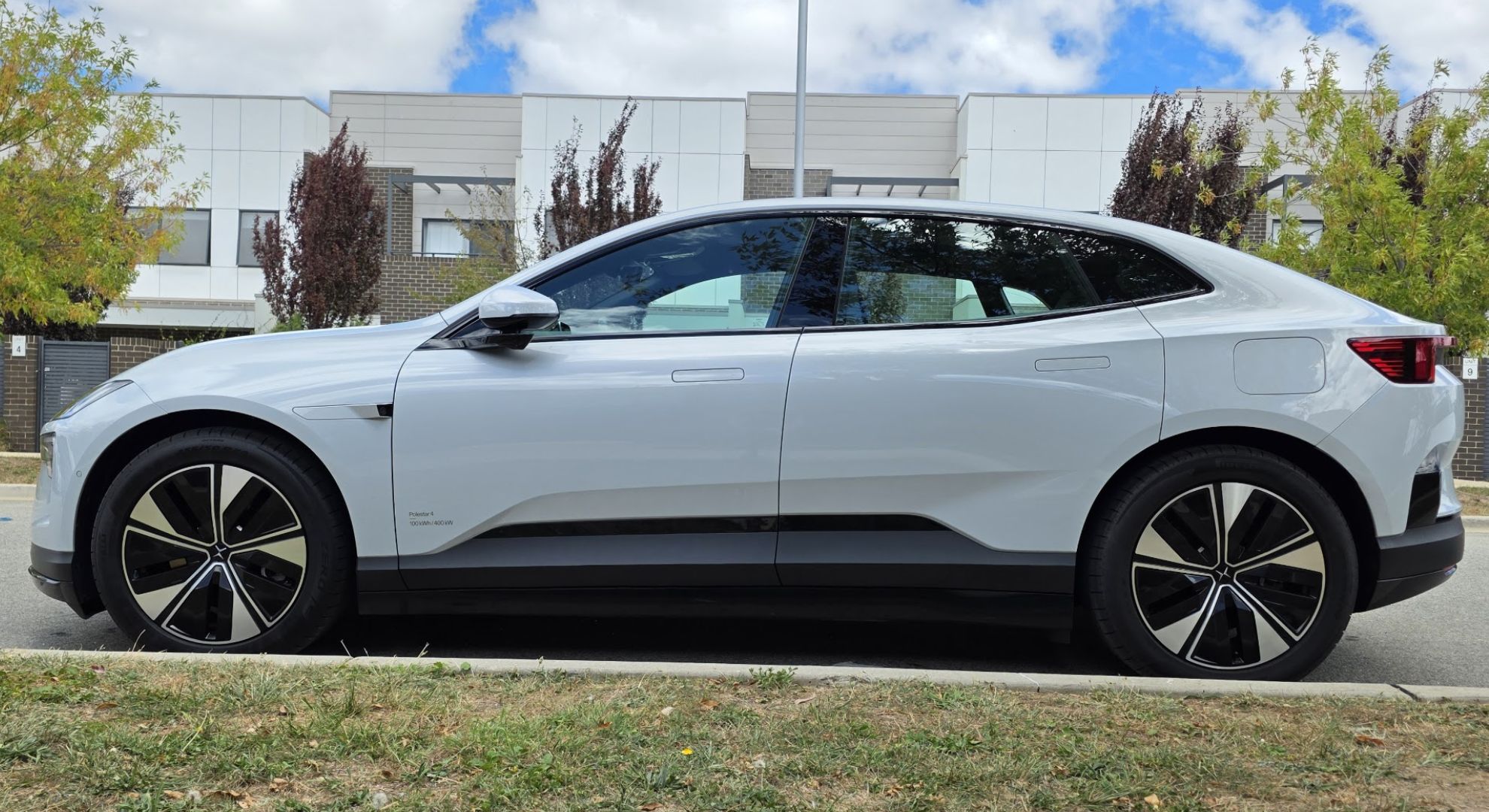
The Polestar 4 is a genuinely phenomenal drive. The week that I spent with it was extremely fun, marked by an awesome-handling car, terrific range and a premium interface that leaves the likes of BMW and Audi in the dust.
I’m not so sure about Porsche, but Polestar hasn’t had to try hard to offer an EV experience that keeps the aforementioned brands on their toes. Competitive pricing and a much more interesting interior and exterior aesthetic should be enough to draw customers in, but the driving experience remains much more mastered in this Scandinavian supercar.
Underpinning this entire experience is the Android Automotive OS – the operating system that Polestar and Volvo employ for their EVs. It’s second to none – I personally much prefer it to Tesla’s operating system – and it’s much more intuitive than software offered by older and bigger carmakers.
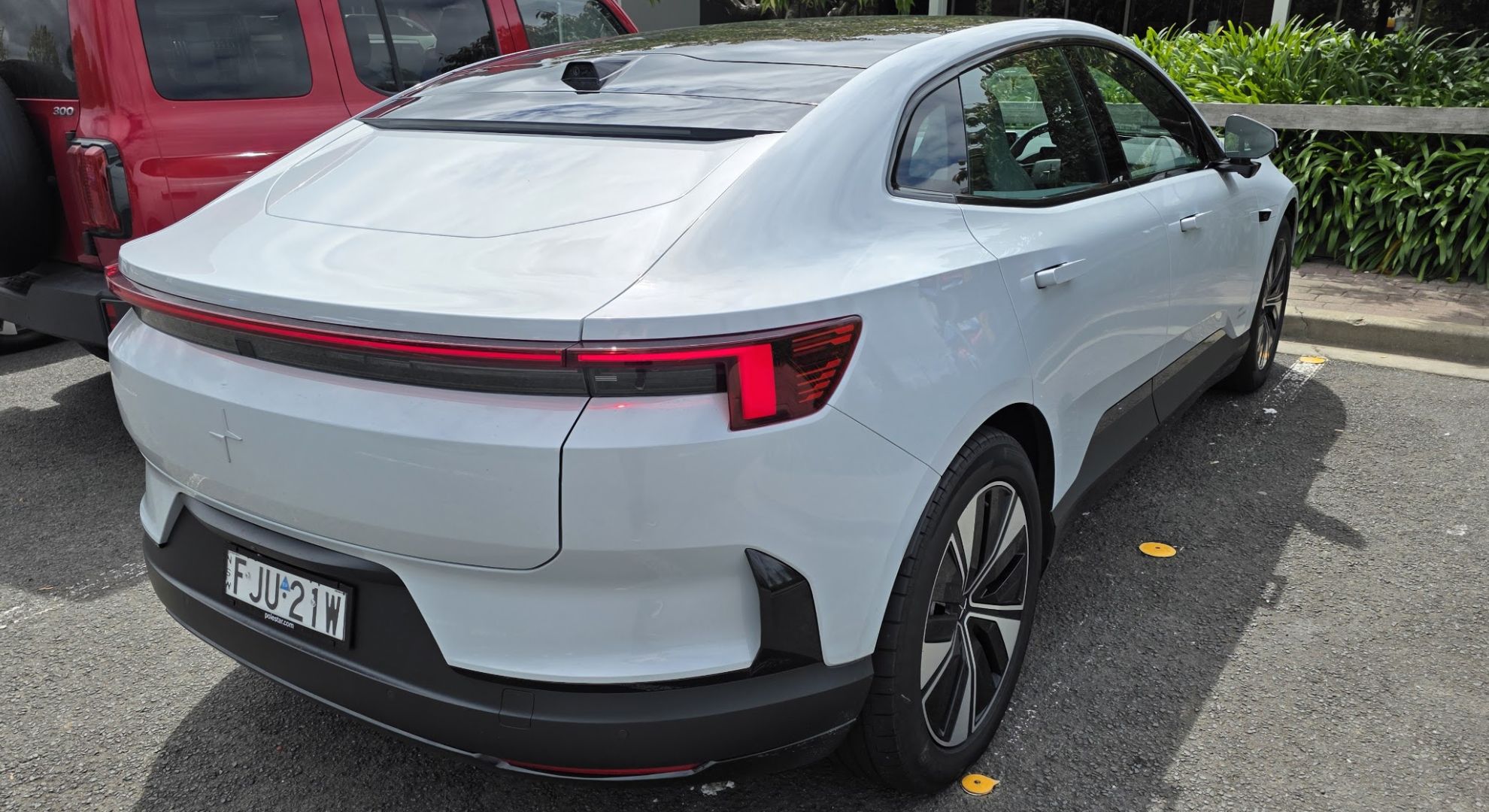
Oh, I almost forgot about the missing rear window – it’s the feature of the moment, right? Interior-wise, the removal of that rear window doesn’t feel claustrophobic. Rather, it allows the design to accommodate a gorgeous, roof-spanning glass that illuminates the rear seats. The length of the rear seat windows give you decent vision around your car and stylistically, at least on the inside, I’d consider it a win.
You still get the camera shooting out the back (with video feeding through to what would be your rear mirror), but Polestar’s 360-degree surround-view camera system definitely makes the car more wieldy when parking or reversing.
Don’t take this praise as if I’m all aboard the rear-windowless train (or car). There’s still a considerable point of failure with this design choice and I’m not sure if it’s a win on all fronts. There’s a habit in the auto industry right now of attempting to cut down on redundancy, only to balloon it – and so with the Polestar 4, the place previously occupied by a pane of glass has become an area where things can go wrong in terms of both software and hardware.
But first, the good stuff
|
Polestar 4 |
Specs |
|
Price |
Long range single motor: $54,900 / £60,000 / AU$78,500 Long range dual motor: $62,900 / £67,000 / AU$88,350 |
|
Range |
Long range single motor: 300mi (EPA) / 385mi (WLTP) / 620km (WLTP) Long range dual motor: 270mi (EPA) / 367mi (WLTP) / 590km (WLTP) |
|
Battery size |
100kWh |
|
Power/Torque |
Long range single motor: 200 kW / 272 hp Long range dual motor: 400 kW / 544 hp |
|
Maximum charging capacity |
200kW |
|
Drivertrain |
Long range single motor: RWD Long range dual motor: AWD |
|
Dimensions |
4,839mm L x 2,008mm W x 1,534mm H |
|
Boot capacity |
526L, 1,536L (including rear seating) |
Echoing my colleague Leon Poultney who also went hands-on with the car, there’s more to the Polestar 4 than the rear window.
The Polestar 4 feels like a mid-life and upmarket refresh to the Polestar 2, carrying with it many of the improvements folks were calling for. Its backseat is actually spacious this time around, for example, and it’s much more comfortable to get in and out of – a complaint that I fielded from my taller friends. It’s extremely comfortable and it feels particularly luxurious and unique for its segment – arguably ahead of most things priced similarly.
The use of a holographic heads-up display is also welcome, and I love that the embedded Google Maps feature (my favourite part of the Polestar 2) has remained in the instrument cluster, meaning you can keep your eyes forward at all times without needing to look to the centre screen.
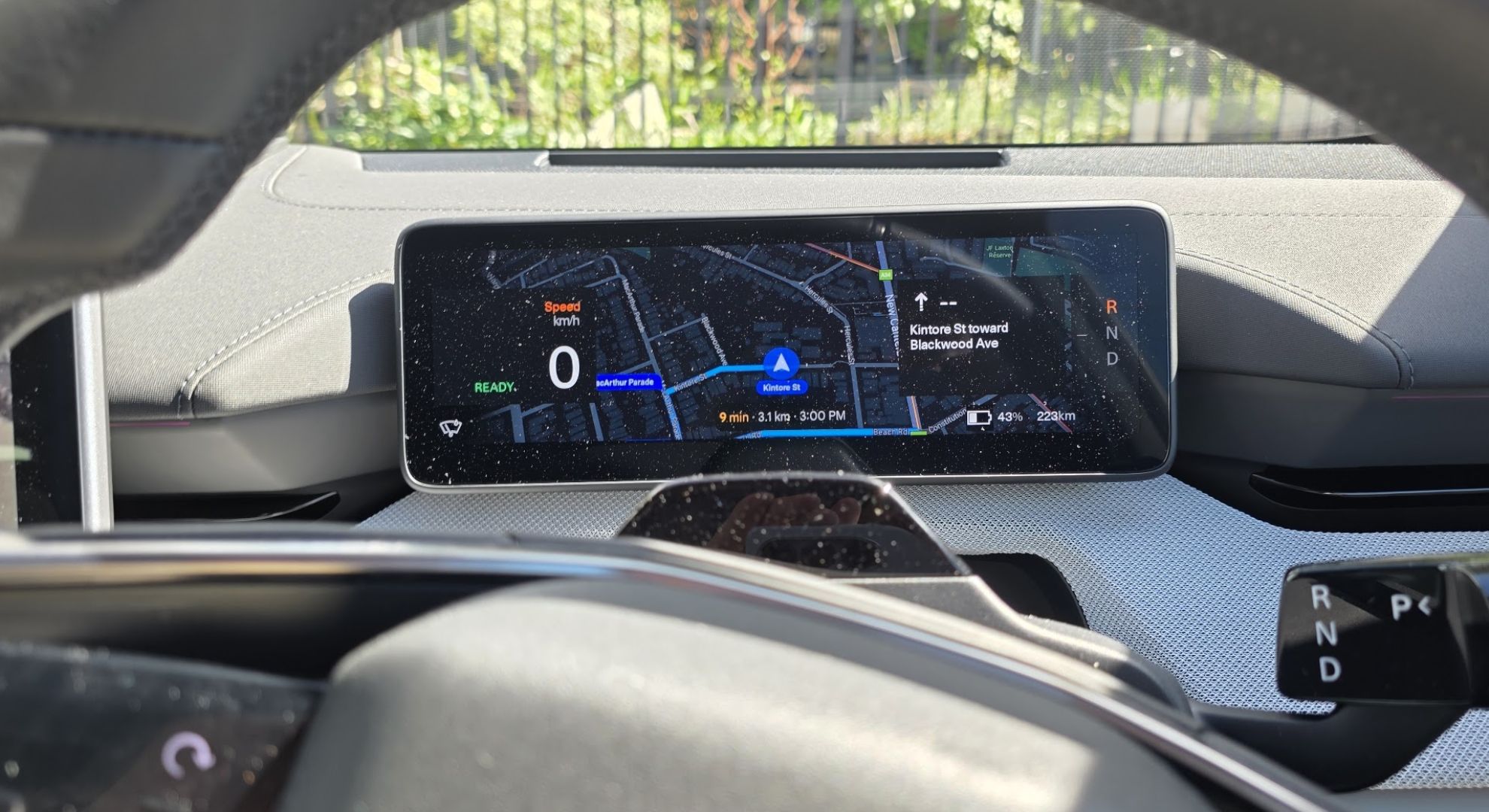
Android Automotive is still tough to go up against, too. Tesla’s operating system is fast and easy to understand, but I personally prefer the look and layout of Automotive, not to mention its deep integration with Google accounts.
Don’t like it? Well, unlike a Tesla, there’s also support for using an iPhone to connect via Apple CarPlay, with Android Auto (the lighter, phone-based Android interface) in development for the car.
It also has some new tricks that are uniquely its own. The most eye-catching of these features is the planet-based mood lighting, which… Look, let me just show you.
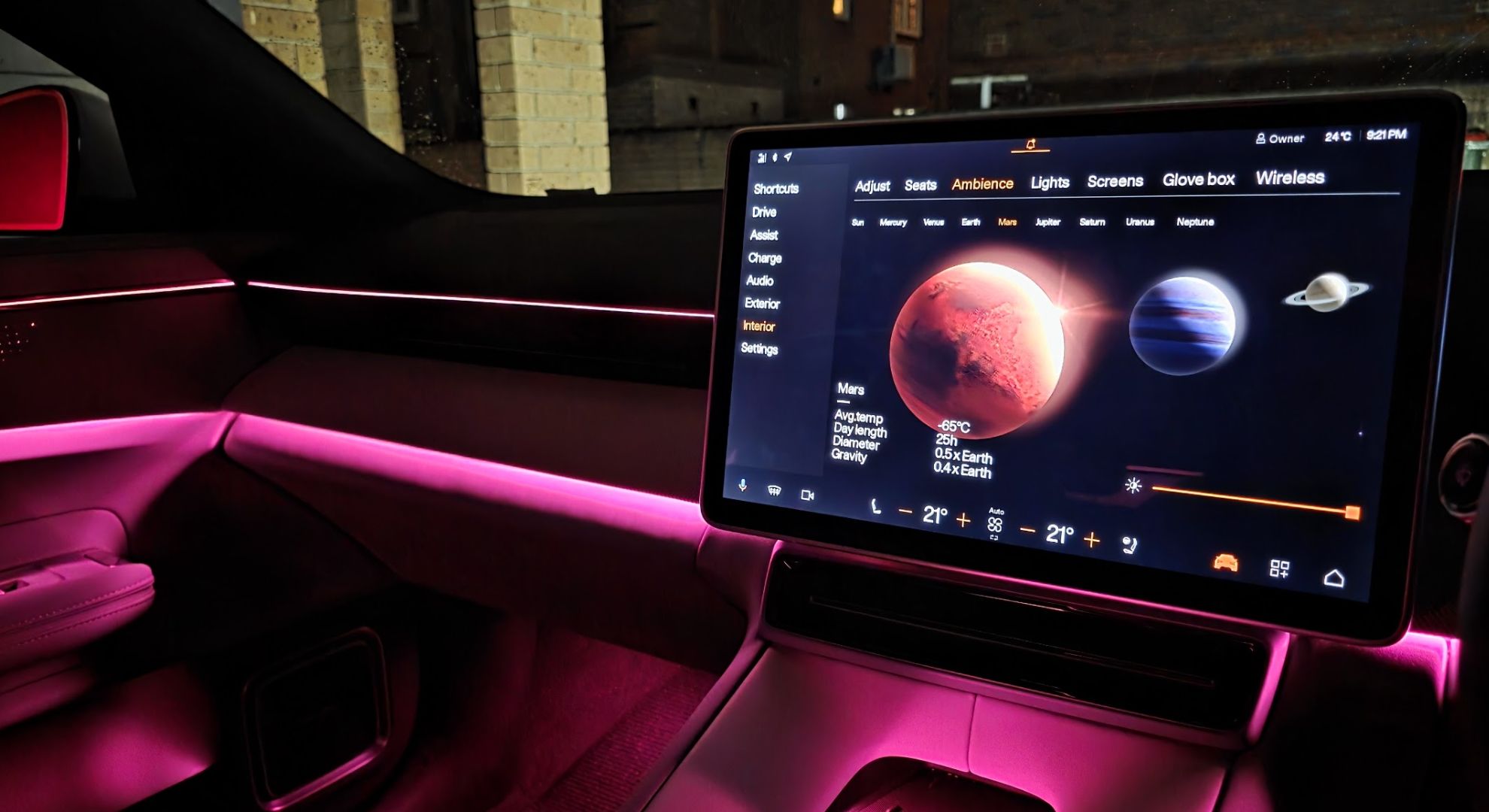
See the planet on the screen? Select any planet (or the Sun) from our solar system and you’ll change the lighting of the entire interior (roof lights excluded). It adds a lot of fun and flavor to the drive, but it’s ultimately harmless and, critically, non-essential. You can turn the lights down or off if you elect to. (And no, Pluto is not included, sorry Pluto truthers.)
That screen also includes all the drive options. Steering control, suspension adjustment, acceleration power and air conditioning – with every feature able to save to your very own driver profile, so you and your partner can have different adjustments automatically toggle on whenever they get in the driver’s seat (this includes seat adjustment).
Moving on, how does it drive? Really well. This is one of the best-feeling electric cars I’ve ever driven. The punchy Hyundai Ioniq 5N was fun, and the MG4 XPower is like putting a rocket on a roller skate, but the elegant power of the Polestar 4 is hard to beat. Suspension is well tuned, and the road noise is barely noticeable. The long range, rear-wheel-drive model that I tested never felt heavy or sluggish, and despite having no rear window, it’s still an easy enough car to maneuver.
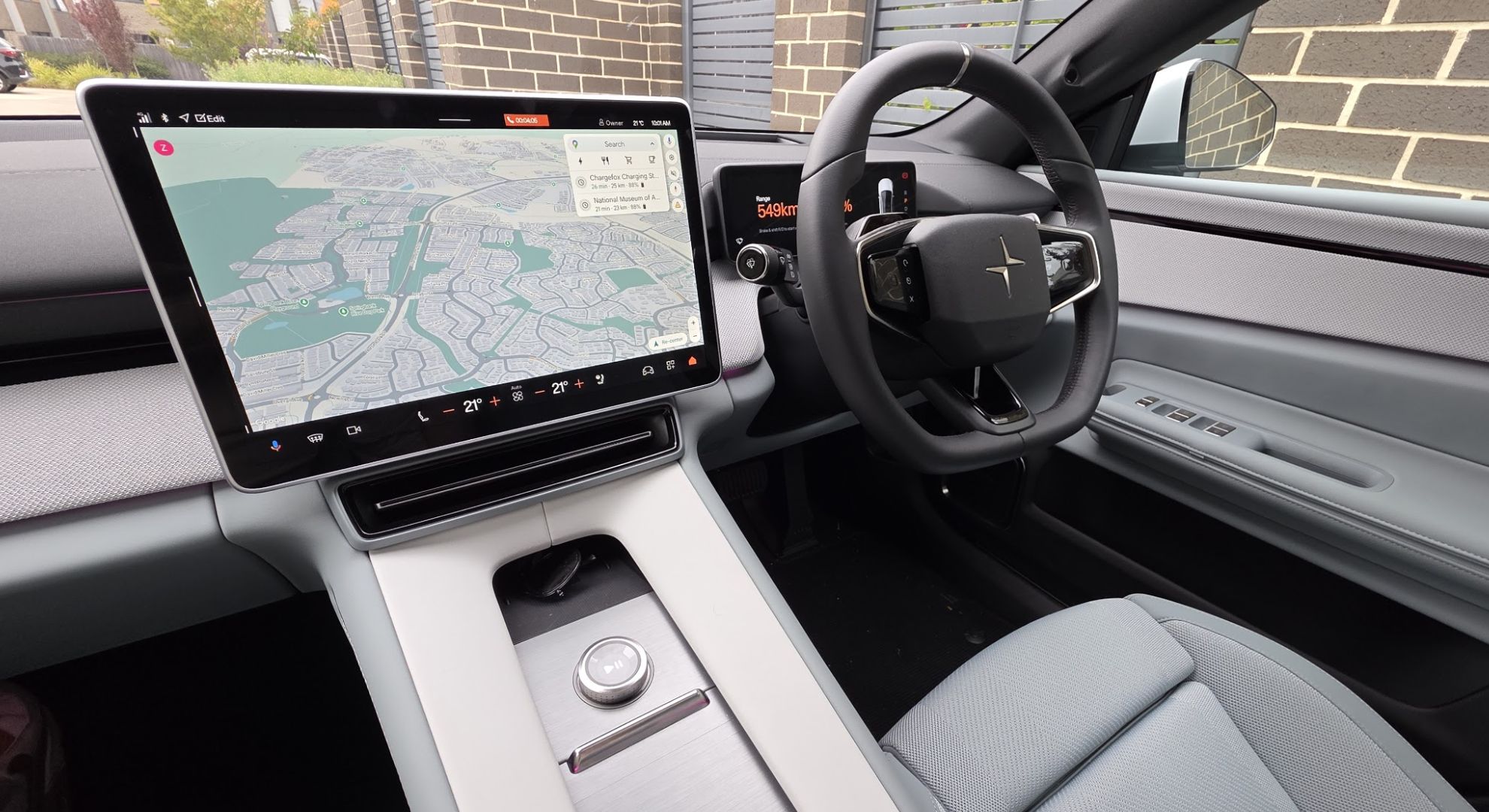
Perhaps the only true advantage to the lack of rear glass is that you’re not blinded by the car behind you if they’ve got bright headlights shooting at you during the night – which I absolutely appreciated driving to Australia’s capital, Canberra, from Sydney. The 360-degree and reversing cameras were sufficient for parking and providing decent all-around vision, and the rear seat windows felt big enough that you could confidently look behind yourself to check for cars when reversing onto a road. My driveway is quite steep and leads onto a busy road, and though I missed the rear window (for reasons that I’ll expand upon in the next section), I didn’t feel ill-equipped when pulling off this maneuver.
I absolutely loved the range this car was capable of. Capable of up to 620km (WLTP) on the Long Range Single Motor variant that I drove, and 590km on the Dual Motor version, I was able to travel very confidently without any range anxiety. With DC recharging of up to 200kW, I never spent more than 20 minutes at a public charger, and obviously I loved the inclusion of a wall socket charging cable for top-ups at home overnight.
But that’s where I’m going to leave compliments. It’s an epic car that feels worth its money, there’s no doubt, but there are absolutely shortcomings that you should know about before making a purchase.
Look behind you
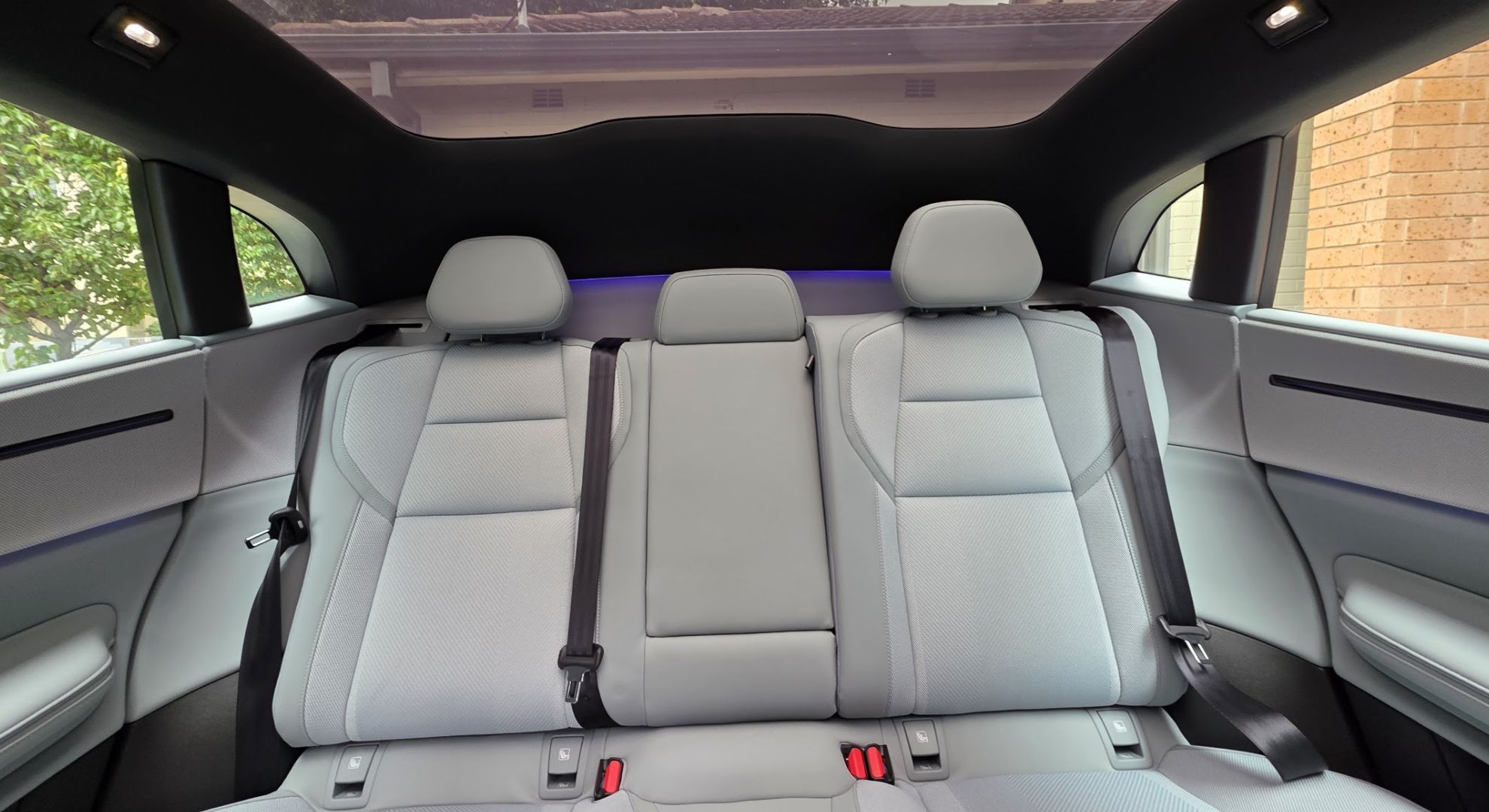
It can’t go without saying – the replacement of rear glass with a camera exposes the car owner to a new suite of things that can go wrong. You’re no longer worrying about a giant sheet of glass that could shatter, sure, but relying on a tiny little camera turns what could previously have been a physical issue into a software and hardware problem.
Though the camera housing is designed to thwart heavy rain and dirt, a spray can or a piece of gum could both be sufficient to make that lens inoperable until resolved. Software-deep, you’re also assuming a lot of a company that it can guarantee rear vision without any glitches arising; I’ve previously had EVs in for review that have had their camera systems disabled after annoying bugs.
Additionally, without the rear glass, it’s difficult to get a sense of depth between you and the car behind, and depending on your preferences, the zoom and angle of the camera might not be sufficient – though these things can be adjusted.
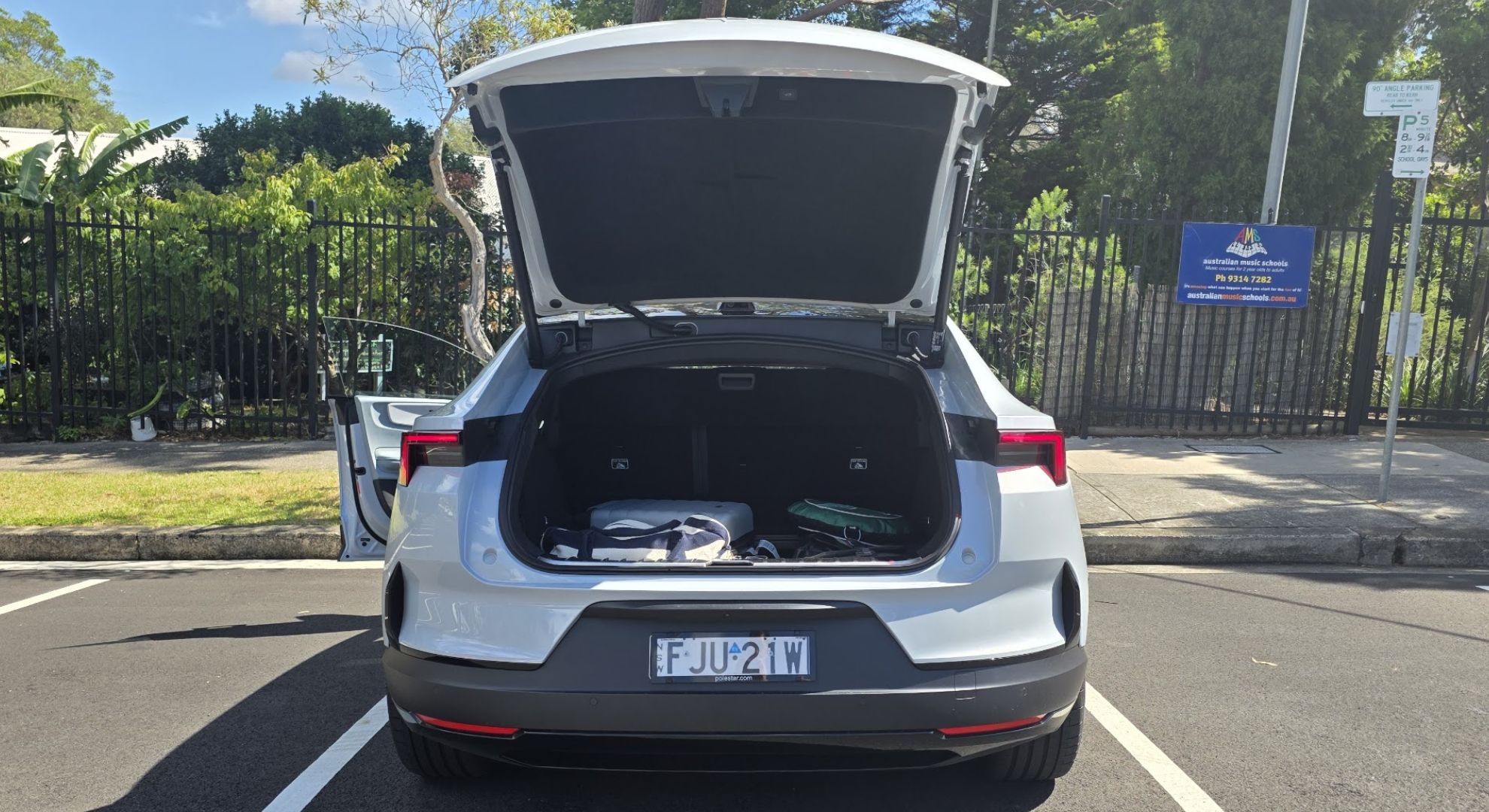
Despite the car feeling pleasant to drive and not cumbersome on the road, the goal of creating an SUV-coupe has come with its own shortcomings too. For example, my editor and I tried loading an office chair into the back of this car and found it to be an extremely difficult task, down to the restrictive angling of the boot door. It still offers 526 litres of storage in the back and 1536 litres with the seats folded, but the layout of the back and the rear hatch feel at odds with the capacity.
The only other issue I have with the car is its actuated charge door. This isn’t unique to the Polestar 4 and is present in many other upmarket EVs, but the charging port door opens and closes with motor actuation. I see it as silly – there’s nothing wrong with a manual pop open and close – but with the Polestar 4, the door was programmed to close after a set time, causing some frustration at a charging station when trying to get things working. It’s a small misgiving, but when so much of this car is smart, this I could have gone without.
The definitive luxury EV
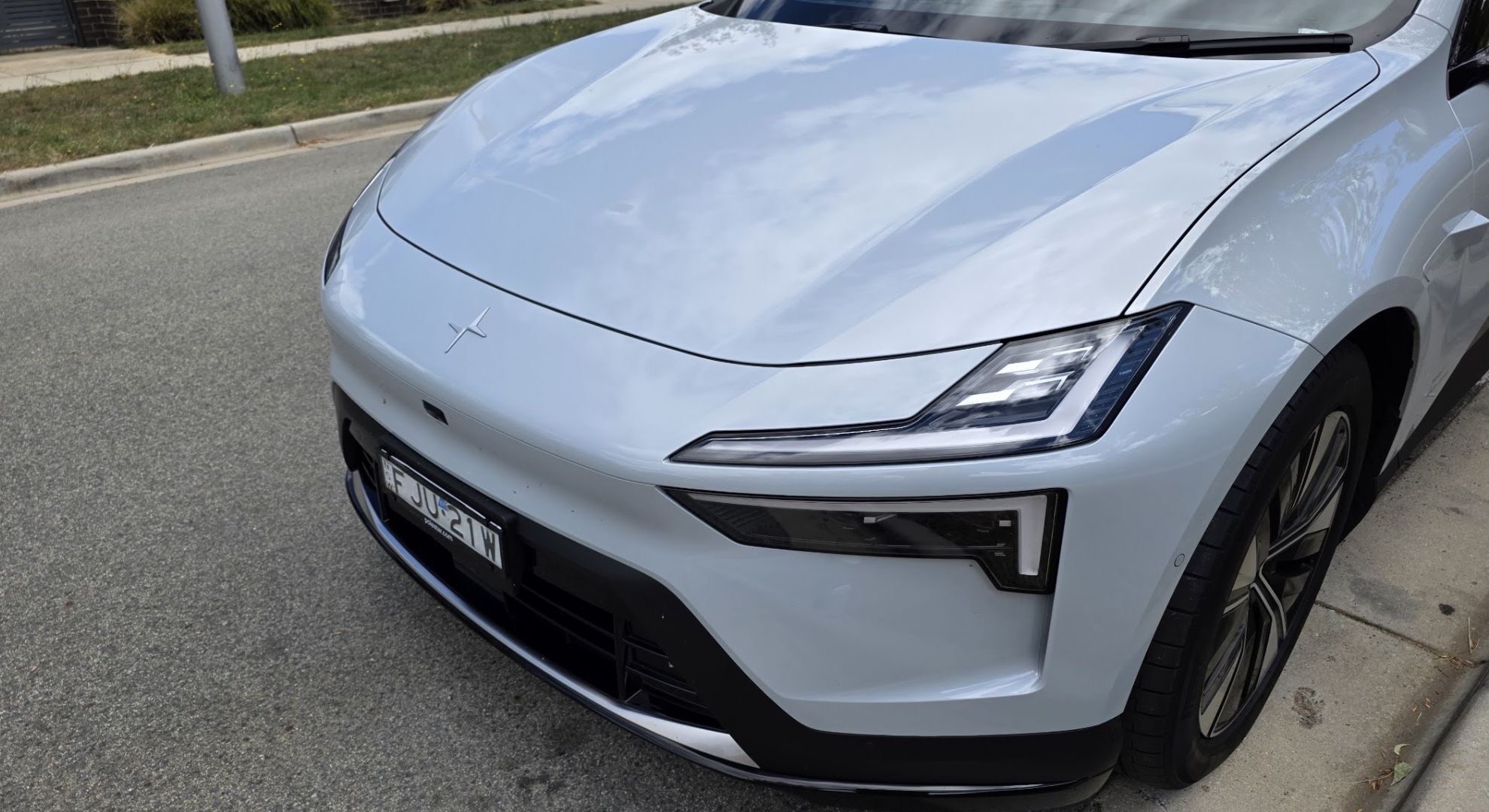
The Polestar 4 is the luxury EV that other carmakers will aspire to beat. While not priced over-the-top, it feels exceptionally premium inside and looks the part on the outside. It drives perfectly with great road handling and visibility on highways, inner city and suburban roads alike and its infotainment and instrument cluster arrangement feels thoroughly thought out.
The defining rear-windowless back end didn’t agitate me anywhere near as much in practice as I thought it would, and in fact I found it preferential during night time highway driving. I’m still not convinced that it’s a better approach for rear vision overall, but I didn’t feel like I lacked any of my driving ability when using the back-facing camera.
I’m very excited to see what other luxury automakers produce to compete with the Polestar 4. The soon-to-be-released Tesla Model Y may seem like the obvious alternative, but it lacks a lot of the Polestar 4’s flair and the latter is actually more in competition with the higher-end Porsche Macan EV, BMW iX2 eDrive20 and Audi Q6 e-tron. It’s priced below these cars in Australia, but is much closer to them in the UK. More premium variants of the Kia EV6 and Hyundai Ioniq 5 also feel well suited in competition with the Polestar 4.
You might also like…
https://cdn.mos.cms.futurecdn.net/NTsRkJ9YBwpK2bVYoAEwdY-1200-80.jpg
Source link
zac.kelly@futurenet.com (Zachariah Kelly)




